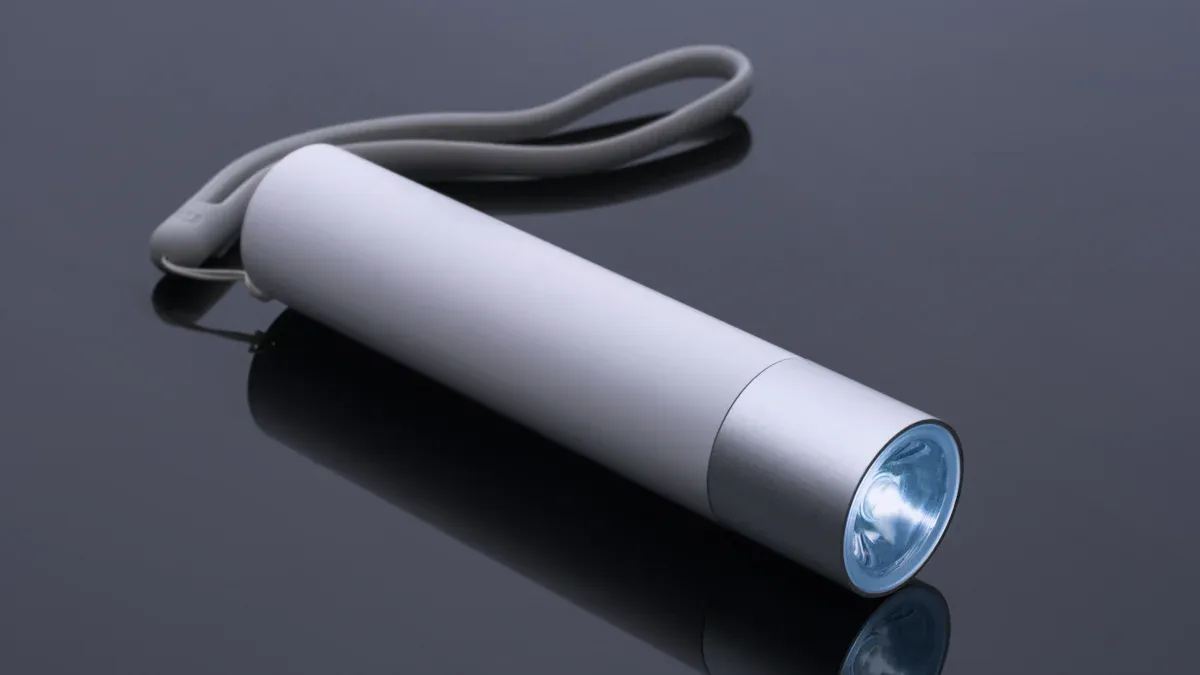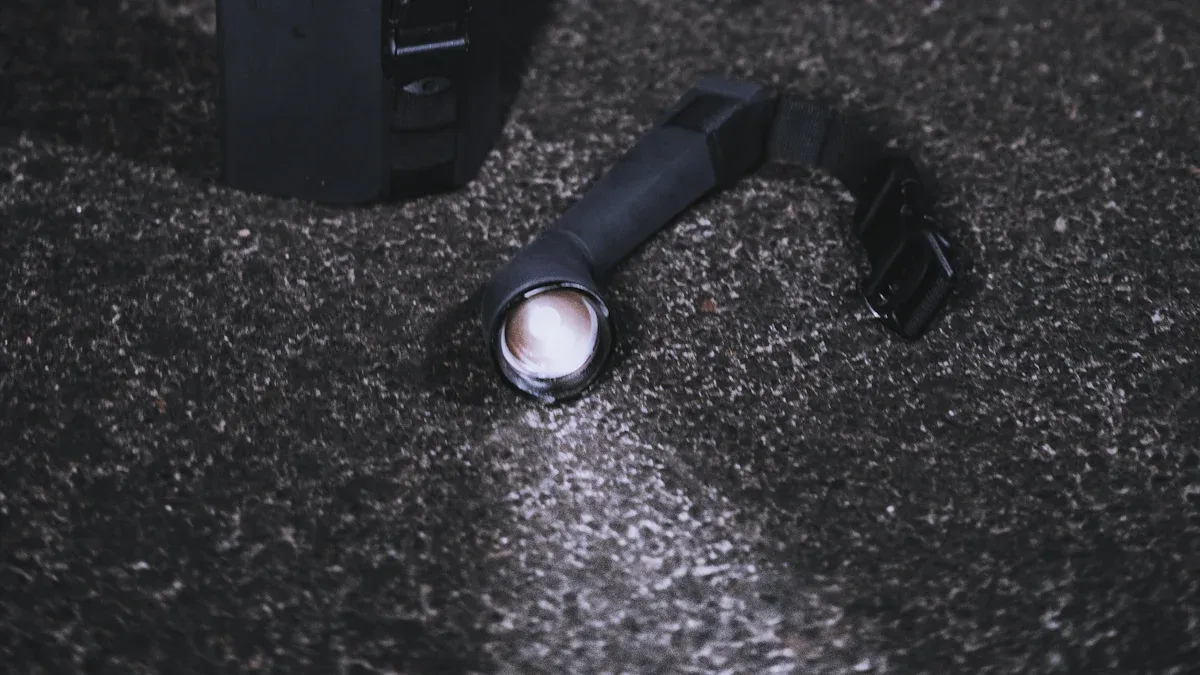Protect Your Helius Flashlight from Water Damage

Your Helius flashlight is a dependable tool, but its performance depends on proper care. Maintaining its waterproof rating ensures it withstands challenging environments. Regular upkeep prevents water damage, preserving its functionality and durability. By taking proactive steps, you can keep your flashlight reliable for years, even in wet or extreme conditions.
Key Takeaways
Check and clean O-rings often to keep them sealing well. Apply silicone grease to make them work better.
Keep your Helius flashlight in a dry, cool spot. Take out the batteries if you’re not using it.
Don’t expose it to very hot or cold places. Stay away from strong cleaners to keep it safe and waterproof.
Understanding Waterproof Ratings

What IP Ratings Mean
IP ratings, or Ingress Protection ratings, classify the level of protection a device offers against solid objects and liquids. These ratings consist of two digits. The first digit represents protection against solid particles, while the second digit indicates resistance to water. For example, an IP65 rating ensures complete dust protection and resistance to low-pressure water jets from all directions. On the other hand, an IP67 rating guarantees protection against dust and immersion in water up to a specific depth.
Here’s a breakdown of the first digit in IP ratings:
Level | Object Size Protected Against | Effective Against |
|---|---|---|
0 | Not protected | No protection against contact or objects |
1 | > 50mm | Large surfaces like the back of a hand |
2 | > 12.5mm | Fingers or similar objects |
3 | > 2.5mm | Tools, thick wires, etc. |
4 | > 1mm | Most wires, screws, etc. |
5 | Dust Protected | Limited dust ingress, no interference with operation |
6 | Dust Tight | Complete protection against dust |
For water resistance, the second digit ranges from IPX0 (no protection) to IPX8 (submersion beyond 1 meter for extended periods). Higher IP ratings indicate better waterproofing, which is essential for outdoor gear like your Helius flashlight.
Importance of Waterproof Ratings for Flashlights
Waterproof ratings directly impact the performance and reliability of your flashlight. A higher IP rating ensures better protection against water intrusion, making it suitable for wet or extreme conditions. For instance, an IPX7-rated flashlight can handle submersion in water up to 1 meter for 30 minutes, while an IPX8-rated model can endure deeper submersion for longer durations.
Maintaining the waterproof rating of your Helius flashlight offers several benefits:
Reliability in All Weather Conditions: Waterproof flashlights perform consistently in rain, snow, or fog, unlike non-waterproof models that may fail in wet environments.
Enhanced Durability for Rugged Outdoor Use: These flashlights withstand impacts and drops, making them ideal for outdoor gear enthusiasts.
Safety in Emergency Situations: Reliable performance during floods or heavy rains ensures visibility and safety when you need it most.
Understanding and preserving your flashlight’s waterproof rating is crucial for its durability and functionality. Regular maintenance and proper handling will help you maximize its performance and longevity.
Tips to Maintain Your Helius Flashlight’s Waterproof Rating

Clean and Inspect O-Rings
O-rings play a critical role in maintaining your flashlight’s waterproof seal. Regular cleaning and inspection ensure they remain effective. Follow these steps to care for your O-rings:
Disassemble your Helius flashlight by unscrewing the head, bezel, and tail cap. Refer to the manual for guidance.
Remove the batteries to prevent accidental activation.
Wipe the O-rings and threads with a soft, lint-free cloth to remove debris.
Apply a small amount of silicone grease to the O-rings to enhance the seal and ensure smooth operation.
Avoid over-tightening the head and tail caps, as this can compress the O-rings and reduce their effectiveness.
Inspect the O-rings for signs of wear or damage. Replace them immediately if you notice cracks or deformation to maintain the flashlight’s durability.
Use Silicone Grease for Seals
Silicone grease is essential for preserving the seals of your flashlight. It prevents water intrusion and extends the life of the O-rings. Choose a high-quality grease like Nyogel 760G, which is compatible with most O-rings and ideal for electrical contacts. Avoid using greases that may damage silicone O-rings. Apply a thin layer to the threads and seals to ensure a tight, waterproof fit.
Tip: Check the color of your O-rings to confirm compatibility with silicone grease.
Store in a Cool, Dry Place
Proper storage protects your flashlight from moisture and extreme temperatures, which can compromise its waterproof rating. Always store your Helius flashlight in a cool, dry place. Remove the batteries when not in use to prevent corrosion. Prolonged exposure to moisture can damage internal components, reducing the flashlight’s durability and performance.
Avoid Extreme Temperatures
Extreme heat or cold can weaken your flashlight’s durable construction and affect its waterproof capabilities. High temperatures may degrade the seals, while freezing conditions can cause materials to contract, leading to leaks. Keep your flashlight away from direct sunlight or freezing environments to preserve its functionality.
Replace Worn-Out Parts
Regular maintenance includes replacing worn-out parts like O-rings, seals, or damaged lenses. These components are vital for maintaining the waterproof integrity of your flashlight. Check your flashlight periodically for signs of wear and replace any compromised parts promptly. This ensures your flashlight remains reliable, even in challenging outdoor conditions.
Note: Using genuine replacement parts designed for your Helius flashlight guarantees optimal performance and durability.
Common Mistakes to Avoid
Mishandling Batteries
Improper battery handling can compromise your flashlight’s performance and durability. You should always use the lockout feature when storing your Helius flashlight. This prevents accidental activation, which can drain the battery. Regularly inspect the batteries for signs of overheating, such as swelling or discoloration. Overheating can damage internal components and reduce the flashlight’s lifespan. Neglecting routine inspections may cause you to miss early signs of battery issues, leading to costly repairs.
Tip: Use high-quality batteries recommended by the manufacturer to ensure optimal performance and avoid potential damage.
Skipping Regular Maintenance
Skipping maintenance is one of the most common mistakes that can affect your flashlight’s waterproof capabilities. Dirt and debris can accumulate on the O-rings and seals, weakening their effectiveness. You should clean these components regularly and apply silicone grease to maintain a tight seal. Ignoring this step can lead to water intrusion, which may damage internal parts. Regularly check for worn-out parts, such as cracked O-rings or damaged lenses, and replace them promptly to preserve your flashlight’s durability.
Using Harsh Cleaning Products
Using harsh cleaning products can degrade the materials of your flashlight. Avoid cleaners containing alcohol, ammonia, or abrasive chemicals. These substances can weaken the seals and damage the flashlight’s surface. Instead, use a soft cloth dampened with mild soap and water to clean the exterior. For the internal components, follow the manufacturer’s guidelines to ensure safe cleaning practices. Proper cleaning helps maintain the flashlight’s waterproof rating and extends its lifespan.
Ignoring Signs of Water Damage
Ignoring early signs of water damage can lead to irreversible harm. Look for symptoms such as condensation inside the lens, corrosion on the battery contacts, or a flickering light beam. These issues indicate that water has entered the flashlight. Address them immediately by drying the flashlight thoroughly and replacing any damaged parts. Proactive measures can prevent further damage and ensure your flashlight remains reliable for outdoor gear adventures.
Note: Regularly test your flashlight in controlled conditions to confirm its waterproof integrity before using it in extreme environments.
Regular maintenance ensures your Helius flashlight remains reliable and water-resistant. By cleaning components, inspecting seals, and storing it properly, you prevent failures and extend its lifespan. These practices reduce replacement costs and keep your flashlight ready for emergencies. A well-maintained flashlight performs optimally, even in challenging conditions, safeguarding its durability and functionality.
FAQ
How often should you inspect the O-rings on your Helius flashlight?
Inspect the O-rings every three months or after exposure to water. Regular checks ensure the seals remain intact and maintain waterproof integrity.
Can you use any type of grease on the flashlight’s seals?
No, only use silicone grease compatible with O-rings. Other greases may degrade the material, compromising the waterproof rating and overall performance.
What should you do if water enters your flashlight?
Immediately remove the batteries and dry the flashlight thoroughly. Inspect for damage, replace affected parts, and test its waterproof integrity before reuse.
Tip: Always test your flashlight in controlled conditions after repairs to ensure it remains water-resistant.
See Also
In-Depth Review of Heliusworld's Latest Flashlight Model
Discover the Helius Tactical Flashlight for Your Journeys
Top Reasons to Select Helius Flashlight for EDC
